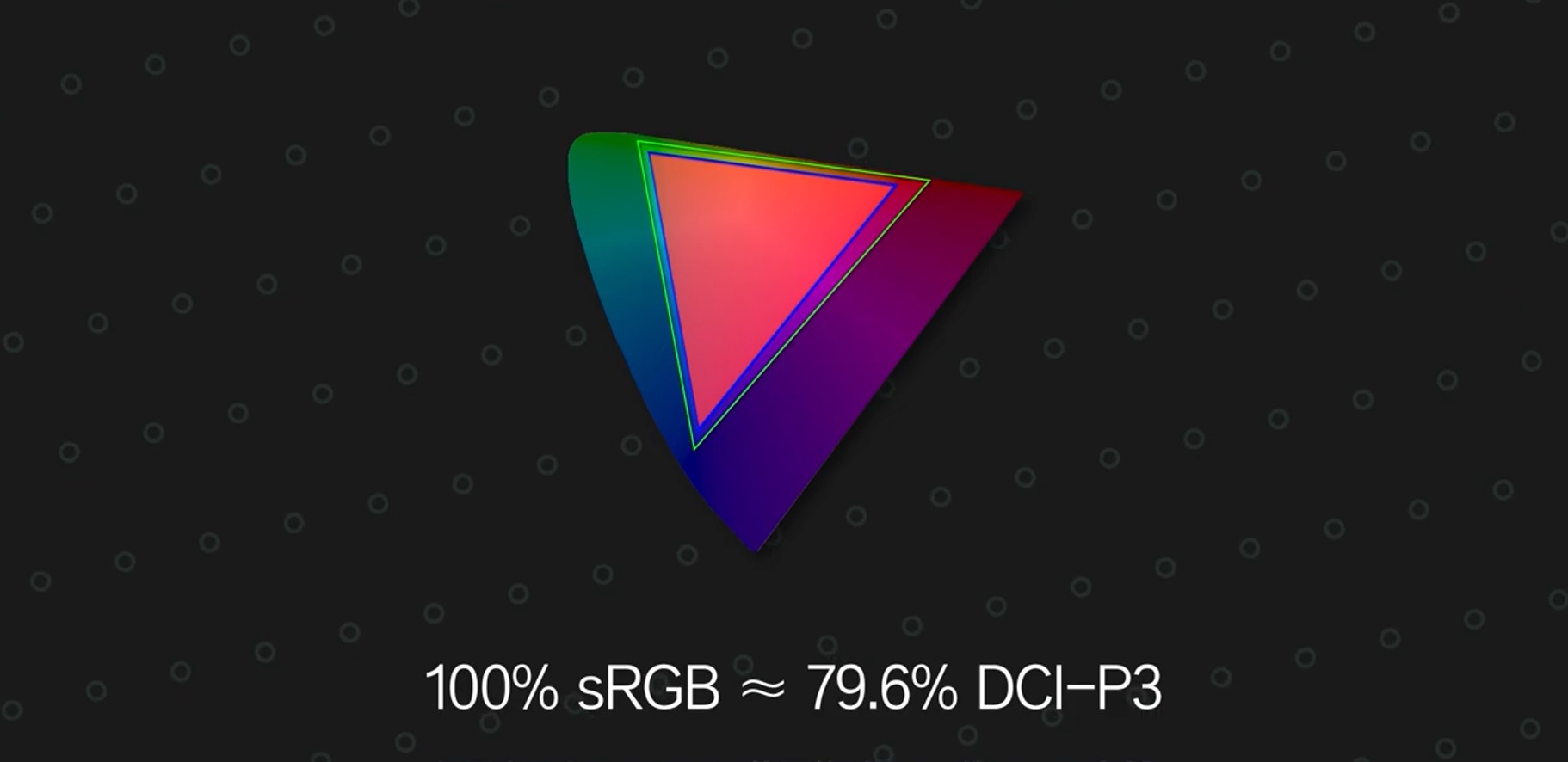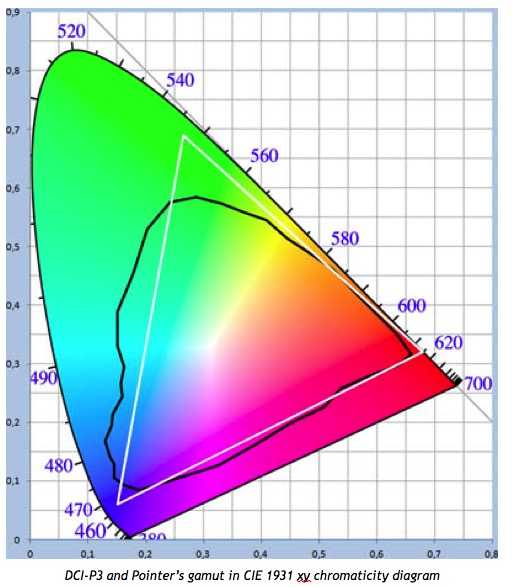1. Introduction
At recent exhibitions, different companies define color gamut standards differently for their displays, such as NTSC, sRGB, Adobe RGB, DCI-P3, and BT.2020. This discrepancy makes it challenging to directly compare the color gamut data across different companies, and sometimes a panel with a 65% color gamut appears more vibrant than one with a 72% color gamut, causing significant confusion among the audience. With the advancement of technology, more quantum dot (QD) TVs and OLED TVs with wide color gamuts are entering the market. They can display exceptionally vivid colors. Hence, I would like to provide a comprehensive summary of color gamut standards in the display industry, hoping to aid industry professionals.
2. Concept and Calculation of Color Gamut
First, let’s introduce the concept of color gamut. In the display industry, color gamut refers to the range of colors that a device can display. The larger the color gamut, the wider the range of colors the device can display, and the more capable it is of displaying particularly vivid colors (pure colors). Generally, the NTSC color gamut for typical TVs is around 68% to 72%. A TV with an NTSC color gamut greater than 92% is considered a high color saturation/wide color gamut (WCG) TV, usually achieved through technologies like quantum dot QLED, OLED, or high color saturation backlighting.
For the human eye, color perception is highly subjective, and it’s impossible to accurately control colors by eye alone. In product development, design, and manufacturing, color must be quantified to achieve accuracy and consistency in color reproduction. In the real world, the colors of the visible spectrum constitute the largest color gamut space, containing all the colors visible to the human eye. To visually represent the concept of color gamut, the International Commission on Illumination (CIE) established the CIE-xy chromaticity diagram. The chromaticity coordinates are CIE’s standard for color quantification, meaning any color in nature can be represented as a point (x, y) on the chromaticity diagram.
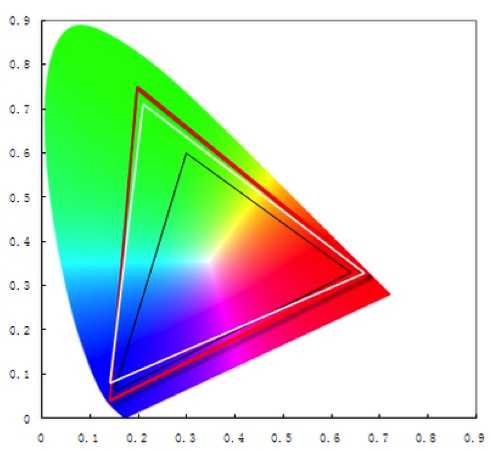
The diagram below shows the CIE chromaticity diagram, where all colors in nature are contained within the horseshoe-shaped area. The triangular area within the diagram represents the color gamut. The vertices of the triangle are the primary colors (RGB) of the display device, and the colors that can be formed by these three primary colors are contained within the triangle. Evidently, due to differences in the primary color coordinates of different display devices, the triangle’s position varies, resulting in different color gamuts. The larger the triangle, the larger the color gamut. The formula for calculating the color gamut is:
Gamut=ASALCD×100%
where ALCD represents the area of the triangle formed by the primary colors of the LCD display being measured, and AS represents the area of a standard triangle of primary colors. Thus, the color gamut is the percentage ratio of the area of the display’s color gamut to the area of the standard color gamut triangle, with differences mainly arising from the defined primary color coordinates and the color space used. The primary color spaces currently in use are the CIE 1931 xy chromaticity space and the CIE 1976 u’v’ color space. The color gamut calculated in these two spaces differs slightly, but the difference is minor, so the following introduction and conclusions are based on the CIE 1931 xy chromaticity space.
Pointer’s Gamut represents the range of real surface colors visible to the human eye. This standard was proposed based on research by Michael R. Pointer (1980) and encompasses the collection of real reflected colors (non-self-luminous) in nature. As shown in the diagram, it forms an irregular gamut. If a display’s color gamut can fully encompass Pointer’s Gamut, it is considered capable of accurately reproducing the colors of the natural world.
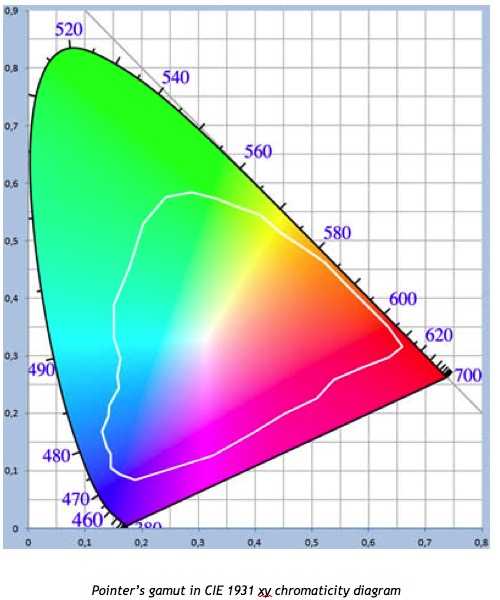
Various Color Gamut Standards
NTSC Standard
The NTSC color gamut standard is one of the earliest and most widely used standards in the display industry. If a product does not specify which color gamut standard it follows, it is generally assumed to use the NTSC standard. NTSC stands for the National Television Standards Committee, which established this color gamut standard in 1953. Its coordinates are as follows:
The NTSC color gamut is much wider than the sRGB color gamut. The conversion formula between them is “100% sRGB = 72% NTSC,” which means that the areas of 100% sRGB and 72% NTSC are equivalent, not that their color gamuts completely overlap. The conversion formula between NTSC and Adobe RGB is “100% Adobe RGB = 95% NTSC.” Among the three, the NTSC color gamut is the widest, followed by Adobe RGB, and then sRGB.
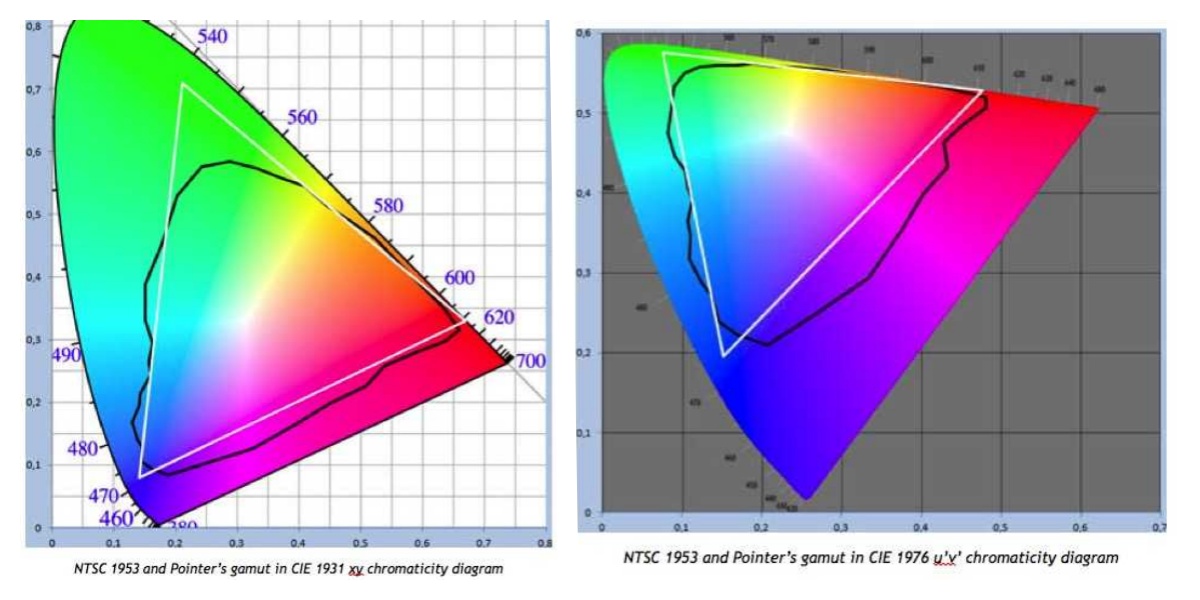
sRGB/Rec.709 Color Gamut Standard
sRGB (standard Red Green Blue) is a color language protocol developed by Microsoft and HP in 1996 to provide a standard method for defining colors, allowing for consistent color representation across displays, printers, and scanners. Most digital image acquisition devices support the sRGB standard, such as digital cameras, camcorders, scanners, and monitors. Additionally, almost all printing and projection devices support the sRGB standard. The Rec.709 color gamut standard is identical to sRGB and can be considered equivalent. The updated Rec.2020 standard has a wider primary color gamut, which will be discussed later. The primary color coordinates for the sRGB standard are as follows:

sRGB is the absolute standard for color management, as it can be uniformly adopted from photography and scanning to display and printing. However, due to the limitations of the time when it was defined, the sRGB color gamut standard is relatively small, covering approximately 72% of the NTSC color gamut. Nowadays, many TVs easily exceed 100% sRGB color gamut.
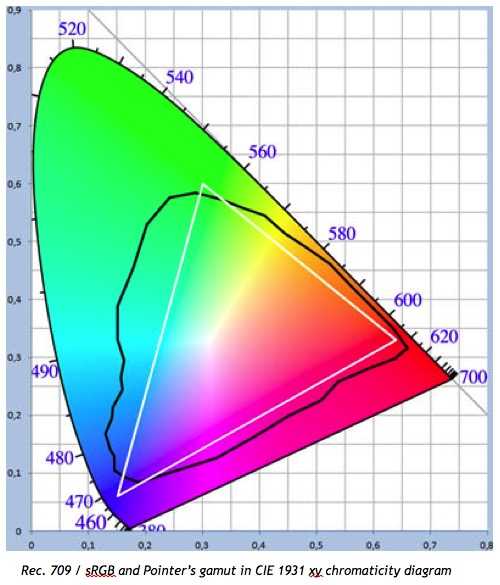
Adobe RGB Color Gamut Standard
Adobe RGB is a professional color gamut standard developed with the advancement of photography technology. It has a wider color space than sRGB and was proposed by Adobe in 1998. It includes the CMYK color gamut, which is not present in sRGB, providing richer color gradations. For professionals in printing, photography, and design who need precise color adjustments, displays that use the Adobe RGB color gamut are more suitable. CMYK is a color space based on pigment mixing, commonly used in the printing industry and rarely in the display industry.
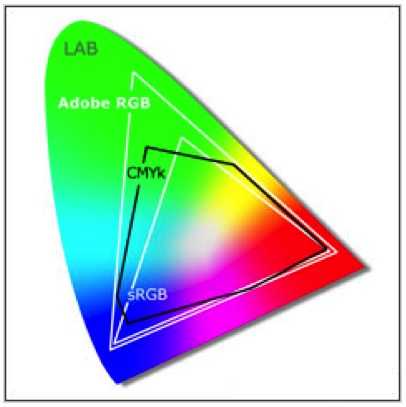
DCI-P3 Color Gamut Standard
The DCI-P3 color gamut standard was defined by the Digital Cinema Initiatives (DCI) and released by the Society of Motion Picture and Television Engineers (SMPTE) in 2010. It is mainly used for television systems and cinemas. The DCI-P3 standard was originally designed for cinema projectors. The primary color coordinates for the DCI-P3 standard are as follows:
The DCI-P3 standard shares the same blue primary coordinate with sRGB and Adobe RGB. Its red primary coordinate is that of a 615nm monochromatic laser, which is more vivid than the NTSC red primary. The green primary of DCI-P3 is slightly yellowish compared to Adobe RGB/NTSC, but more vivid. The DCI-P3 primary color gamut area is about 90% of the NTSC standard.
Rec.2020/BT.2020 Color Gamut Standard
Rec.2020 is an Ultra High Definition Television (UHD-TV) standard that includes color gamut specifications. With the advancement of technology, television resolution and color gamut continue to improve, making the traditional Rec.709 standard inadequate. Rec.2020, proposed by the International Telecommunication Union (ITU) in 2012, has a color gamut area nearly twice that of Rec.709. The primary color coordinates for Rec.2020 are as follows:

The Rec.2020 color gamut standard covers the entire sRGB and Adobe RGB standards. Only about 0.02% of the DCI-P3 and NTSC 1953 color gamuts fall outside the Rec.2020 color gamut, which is negligible. Rec.2020 covers 99.9% of Pointer’s Gamut, making it the largest color gamut standard among the ones discussed. With the progress of technology and the widespread adoption of UHD TVs, the Rec.2020 standard will gradually become more prevalent.
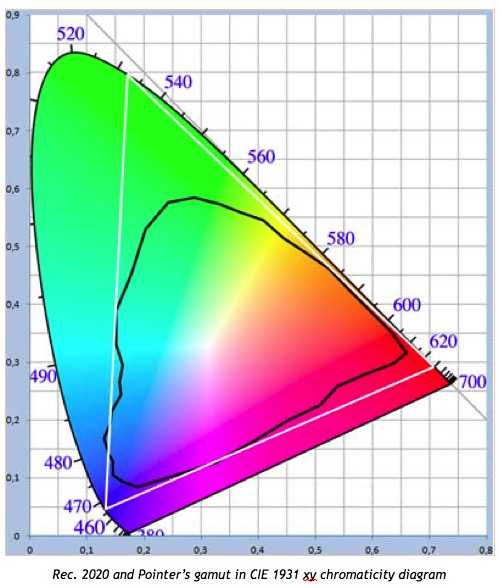
Conclusion
This article first introduced the definition and calculation method of color gamut, then detailed the common color gamut standards in the display industry and compared them. From the area perspective, the size relationship of these color gamut standards is as follows: Rec.2020 > NTSC > Adobe RGB > DCI-P3 > Rec.709/sRGB. When comparing the color gamuts of different displays, it is crucial to use the same standard and color space to avoid blindly comparing numbers. I hope this article is helpful to professionals in the display industry. For more information on professional LED displays, please contact RTLED expert team.
Post time: Jul-15-2024


